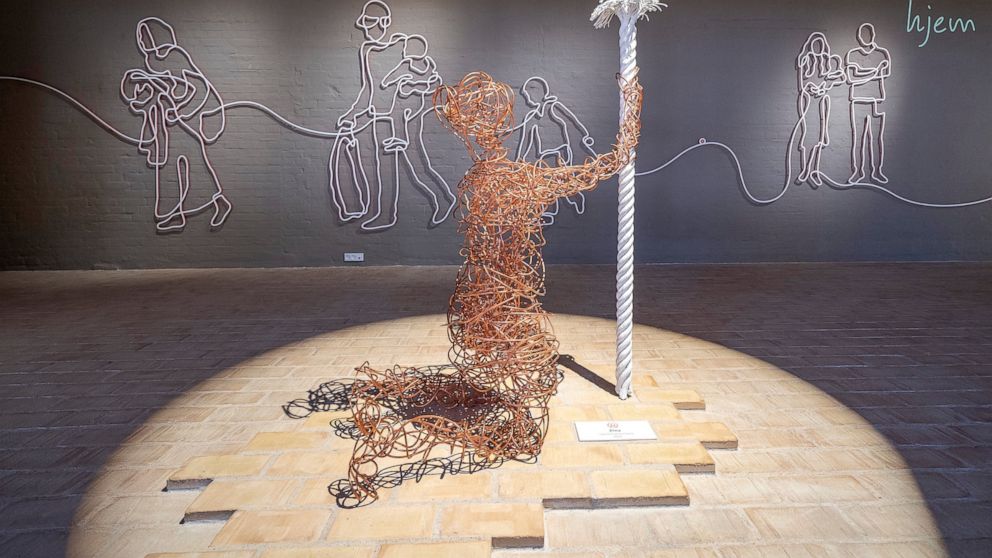COPENHAGEN, Denmark — Denmark’s Queen Margrethe and Germany’s deputy chancellor will inaugurate a new museum Saturday that tells the story of the generations of refugees who have shaped Danish society, starting with Germans who fled the Soviet advance during World War II.
Flugt — Refugee Museum of Denmark was created on the site of a camp in Oksboel, a town in southwestern Denmark, that housed up to 100,000 refugees from Germany in the postwar years.
Flugt — which means escape in Danish — also tells the story of immigrants from Iran, Lebanon, Hungary, Vietnam and elsewhere who fled their homelands and found shelter in the Scandinavian country. They tell their stories in their own words on large video screens.
“Being a refugee is not something one decides. It is not one’s personal choice, it is something that happens,” Sawsan Gharib Dall, a stateless Palestinian who was born in a refugee camp in Lebanon and lived there until she fled and arrived in Denmark in 1985, says in one video.
Curator Claus Kjeld Jensen explains that the aim of the museum is “to turn numbers into people and convey the completely universal issues, emotions and many nuances associated with being a person on the run.”
The museum was designed by prominent Danish architect Bjarke Ingels and consists of a curved modern building of wood and glass that links two older brick annexes that were hospital buildings in the postwar years.
Ingels has said that the new museum has become more relevant as Denmark has recently accepted refugees fleeing Russia’s war in Ukraine, though the museum doesn’t address them specifically.
Outside the museum, a path guides visitors past plaques describing the fates of the Germans who sought shelter in the camp, called Oksboellejren, between 1945 and 1949. Most of them eventually settled in West Germany but a cemetery on the site has become the final resting place for those who died there.
The museum, which opens to the public June 29, was financed by private donations and the German government, and German vice chancellor, Robert Habeck, will represent his country at Saturday’s opening ceremony.
It is located 275 kilometers (170 miles) west of Copenhagen but just 95 kilometers (60 miles) from the border with Germany.
Denmark was a haven for refugees in the past. Of Denmark’s 5.8 million people, more than 650,000 are immigrants, while 208,000 are listed in the state statistics as descendants of immigrants.
However, the country in recent…
Click Here to Read the Full Original Article at ABC News: International…

